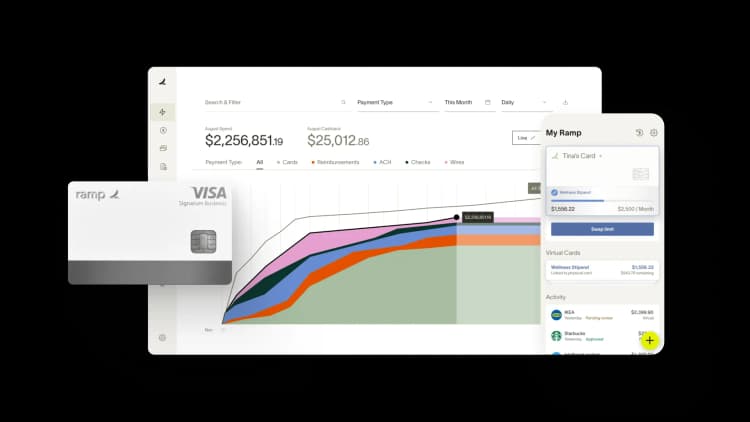How to assign the correct GL codes to every transaction


Accurate GL coding is the foundation of clean books and confident reporting. When every transaction is assigned to the right account, teams can close faster, avoid reclassifications, and maintain compliance across entities. Without consistent coding, finance teams spend hours correcting errors, reconciling mismatched data, and explaining discrepancies during audits.
With the right setup, companies can:
- Maintain accurate financial statements and audit-ready records.
- Automate expense categorization for recurring and complex transactions.
- Reduce manual review and rework at month-end.
- Ensure consistency across departments, entities, and reporting periods.
Below are answers to the most common questions finance teams face around GL coding and automation.
Can a single transaction be split into multiple GL codes?
A single transaction can be split across multiple GL codes when it covers different departments, projects, or expense categories. This ensures each portion of the spend is recorded accurately and supports cleaner, more detailed financial reporting. Ramp handles split transactions automatically, allowing you to assign multiple GL codes within a single expense
____
How do recurring SaaS charges get auto-coded each month?
Recurring SaaS charges are auto-coded through connected bank feeds, vendor recognition, and past transaction patterns. Each charge is matched to the correct GL code automatically, keeping monthly bookkeeping consistent and reducing manual effort. On Ramp, recurring charges are recognized instantly from your connected cards and accounting system.
____
What happens if two rules match the same transaction?
When two automation rules apply to the same transaction, the system reviews both to determine which one should take priority. The goal is to apply the most specific and relevant rule to ensure each transaction is coded accurately, without duplication or conflict. In Ramp, rule priority is determined by order and specificity.
____
Can GL codes be applied differently for foreign vs. domestic charges?
GL codes can differ for foreign and domestic charges to reflect variations in currency, tax rules, and entity structure. This distinction helps maintain accurate reporting and compliance across regions. Ramp automatically identifies the transaction’s country, currency, and entity, then applies the appropriate GL code and tax settings based on your accounting integrations.
____
How are tax-deductible vs. non-deductible expenses coded?
Tax-deductible and non-deductible expenses are coded under separate GL accounts to ensure accurate tax reporting. This distinction helps you track eligible deductions and maintain compliance during audits. Ramp automatically applies the correct GL code based on your accounting integrations and internal rules.
____
Do coding rules apply retroactively to past transactions?
Coding rules typically apply only to new transactions after they are created. Past transactions may remain unchanged unless updated manually or through specific retroactive adjustments.
____
Can managers override accounting codes after month-end close?
Managers usually cannot override accounting codes after month-end close to preserve data integrity. Any post-close adjustments must go through formal journal entries or finance approvals.
“Ramp gives us one structured intake, one set of guardrails, and clean data end‑to‑end— that’s how we save 20 hours/month and buy back days at close.”
David Eckstein
CFO, Vanta

“Ramp is the only vendor that can service all of our employees across the globe in one unified system. They handle multiple currencies seamlessly, integrate with all of our accounting systems, and thanks to their customizable card and policy controls, we're compliant worldwide.” ”
Brandon Zell
Chief Accounting Officer, Notion

“When our teams need something, they usually need it right away. The more time we can save doing all those tedious tasks, the more time we can dedicate to supporting our student-athletes.”
Sarah Harris
Secretary, The University of Tennessee Athletics Foundation, Inc.

“Ramp had everything we were looking for, and even things we weren't looking for. The policy aspects, that's something I never even dreamed of that a purchasing card program could handle.”
Doug Volesky
Director of Finance, City of Mount Vernon

“Switching from Brex to Ramp wasn’t just a platform swap—it was a strategic upgrade that aligned with our mission to be agile, efficient, and financially savvy.”
Lily Liu
CEO, Piñata

“With Ramp, everything lives in one place. You can click into a vendor and see every transaction, invoice, and contract. That didn’t exist in Zip. It’s made approvals much faster because decision-makers aren’t chasing down information—they have it all at their fingertips.”
Ryan Williams
Manager, Contract and Vendor Management, Advisor360°

“The ability to create flexible parameters, such as allowing bookings up to 25% above market rate, has been really good for us. Plus, having all the information within the same platform is really valuable.”
Caroline Hill
Assistant Controller, Sana Benefits

“More vendors are allowing for discounts now, because they’re seeing the quick payment. That started with Ramp—getting everyone paid on time. We’ll get a 1-2% discount for paying early. That doesn’t sound like a lot, but when you’re dealing with hundreds of millions of dollars, it does add up.”
James Hardy
CFO, SAM Construction Group
